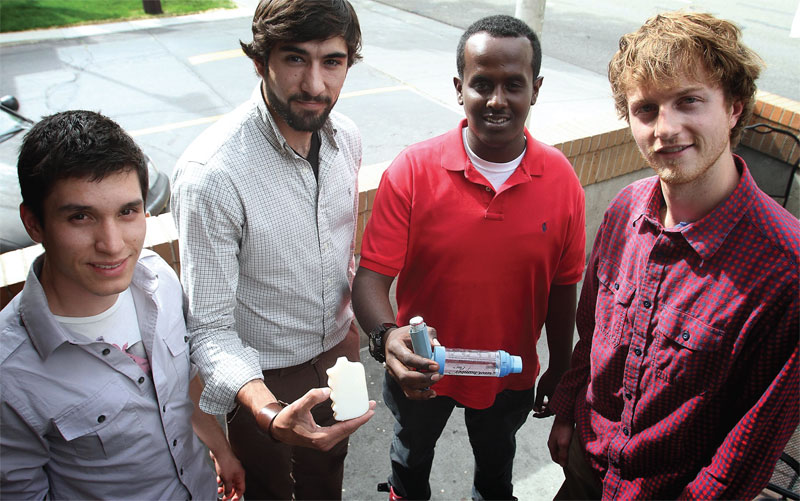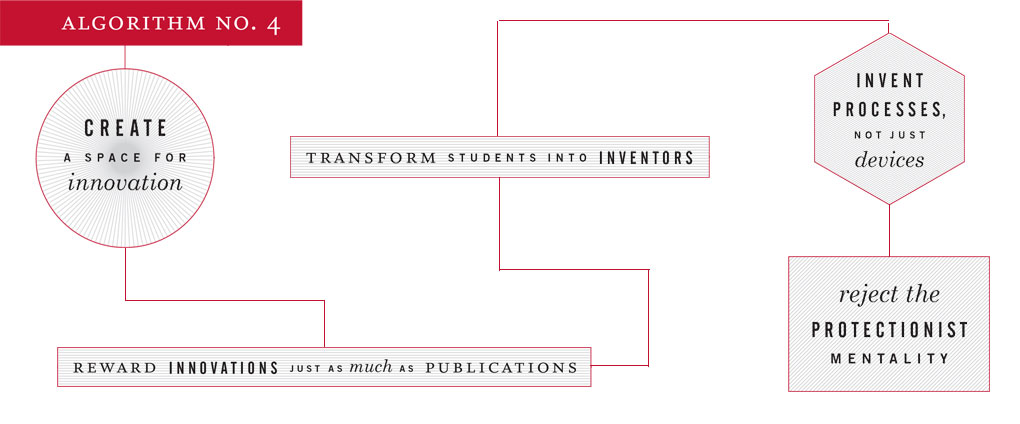Can anyone in academic medicine be an inventor?
For the past two years, the University of Utah has been number one In the nation for creating startups based on university research. these are a few of the things we've learned along the way.

Create a space for innovation
Academic medical centers are overflowing with brilliant ideas. The challenge is figuring out how to turn them into commercially viable products. Provide the support and resources that make it easy and convenient for would–be inventors to take their projects all the way from concept to commercialization.
Reward innovations just as much as publications
Attempting to change the academic review system can feel like trying to move a glacier. But keep pushing if you want to create a truly entrepreneurial medical center. Expand the idea of academic success from NIH grants and published research to include efforts that improve patient care and attract venture capitalists as well as biotech and medical device companies.
Transform students into inventors
Students often think outside the box–because they haven't yet been given a box to think in. Tap into their unbridled potential. Create interdisciplinary courses, programs and competitions to fuel the entrepreneurial spirit, then connect them to faculty mentors and community business people who can help guide, shape and finance their brightest ideas.
Not to play favorites, we have to admit that one of our most impressive innovation stories is the student–run bench to bedside (b2b) competition , which brings together more than 100 medical, engineering and business students to work in teams and solve real–world clinical problems.

Invent processes not just devices
You don't have to create a new medical device to be an inventor. Process innovations can be more revolutionary. Expand the definition of what it means to be an inventor and empower everyone in health care to become leading–edge thinkers.
Reject the protectionist mentality
Throw open the books. Many organizations and institutions are so worried about protecting ideas that they miss out on opportunities. Encourage entrepreneurs to partner with people who have different expertise to help move their ideas forward. Innovation is a team sport.
-

One of the most stressful situations for a new parent and pediatrician alike is when a newborn baby develops a fever, which about 400,000 U.S. babies do every year. Even though in the vast majority of cases, the cause of the fever is a common viral infection, there's always that unsettling possibility that it's due to a life–threatening bacterial infection. For the past 15 years, Carrie Byington, M.D., professor of pediatrics, has been working on developing diagnostic tools and creating a care process model for the febrile infant. Along the way, she has created the largest study of infants with fever in the world–12,000 and counting. In 2008, she implemented her care process model in Intermountain Healthcare facilities and recently published her findings in Pediatrics (June 25, 2012). "We were able to show that infants had better outcomes, families were very satisfied, and the hospital is saving $2 million a year," says Byington. Health systems across the country are beginning to adopt the model and Byington is helping to write new guidelines for the American Academy of Pediatrics. -

Asking patients to rate their pain from 1 to 10 turns out to be a loaded question that often doesn't solicit a helpful response. Chief nursing officer Margaret Pearce, Ph.D., R.N., wanted to create a better pain care experience for patients and asked quality improvement specialist Brenda Gulliver, R.N., to lead the effort. Gulliver discovered that researchers at the University of Utah Pain Management Center had been working on a similar goal for years. In a large team collaboration with Gary Donaldson, Ph.D., professor of anesthesiology and director of the center, nurses began asking patients more conversationally about their pain and how it affected their ability to function during the day. Although the questions were more open–ended, the documentation was highly structured. Since piloting the new project six months ago, patient satisfaction pain care scores have risen from the 48th percentile to the 95th percentile.

